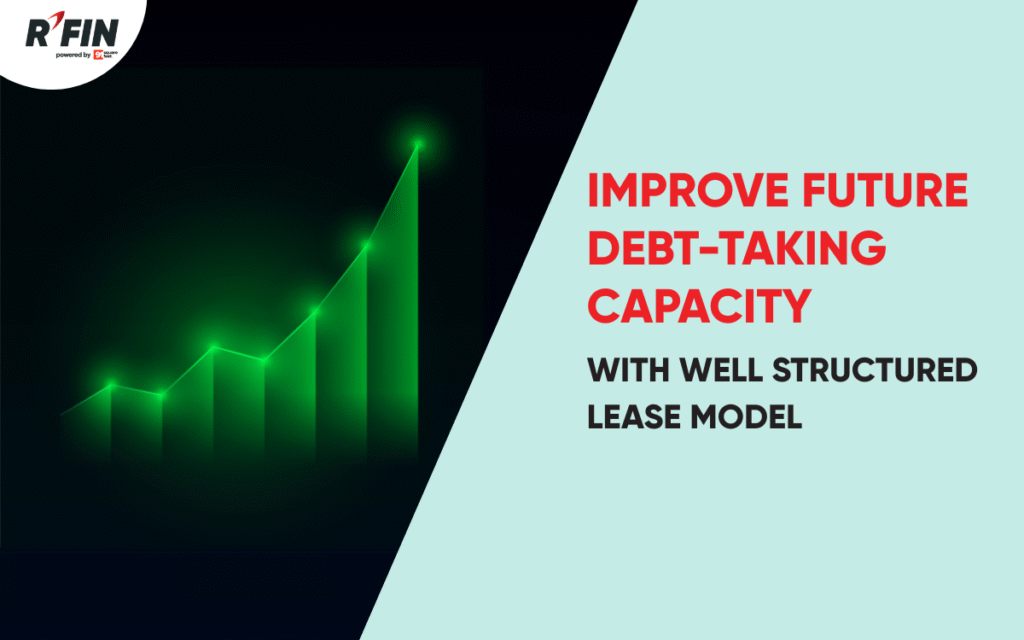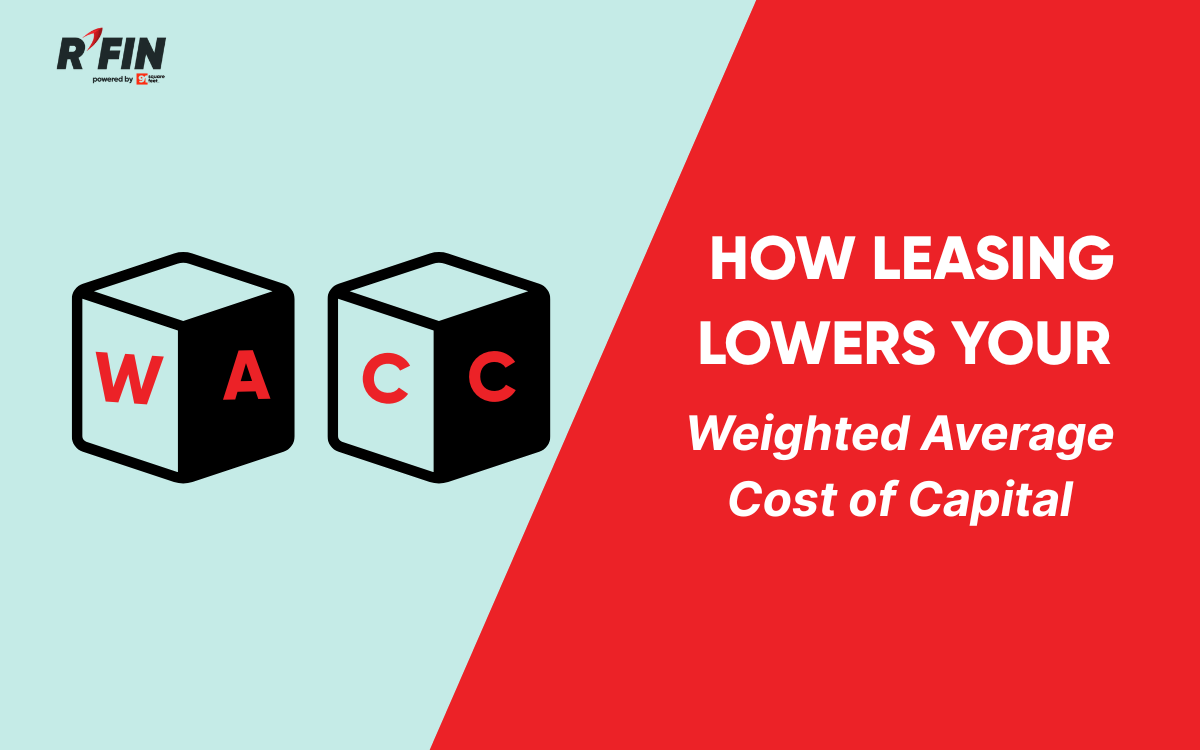For many growing businesses, the biggest challenge is not just accessing funds — it’s accessing them at the right time and at the right cost without damaging the company’s long-term financial health.
One financial strategy that is proving to be highly effective for small and mid-sized enterprises (SMEs) is the use of operating leases instead of traditional loans to fund capital expenditure (CapEx). When structured properly, an operating lease keeps your balance sheet cleaner, improves financial ratios, and boosts your ability to take on more and cheaper debt in the future.
What is an Operating Lease?
An operating lease allows your business to use an asset (like equipment, machinery, IT hardware, retail store fit-outs, solar panels, etc.) without owning it. Instead of taking a loan to buy the asset, you pay monthly or quarterly lease rentals to use it — just like renting.
• You don’t show the asset in your balance sheet (under IGAAP).
• You don’t show any loan liability either.
• All you record is lease rental as a monthly expense.
Result? Your balance sheet remains lean and healthy.
Sample Balance Sheet – Understanding the Building Blocks
Let’s start with a simplified balance sheet and show which components impact important financial ratios:
| Balance Sheet Item | Amount (INR) | Used in Ratio Calculations |
| Assets | ||
| Fixed Assets (Owned) | 5,00,00,000 | Part of Total Assets (Denominator for ROA, ROCE) |
| Inventory | 1,00,00,000 | Part of Total Assets (not directly used in ratios mentioned here) |
| Debtors | 75,00,000 | Part of Total Assets (not directly used in ratios mentioned here) |
| Cash & Bank Balance | 50,00,000 | Part of Total Assets and affects liquidity ratios |
| Total Assets | 7,25,00,000 | Denominator for ROA and balance sheet check |
| Liabilities & Equity | ||
| Equity Share Capital | 2,00,00,000 | Part of Shareholder Equity (Denominator for D/E, TOL/TNW) |
| Retained Earnings | 1,00,00,000 | Part of Shareholder Equity |
| Term Loan from Bank | 3,00,00,000 | Part of Total Outside Liabilities (Numerator for D/E, TOL/TNW) |
| Creditors / Trade Payables | 75,00,000 | Part of Total Outside Liabilities (Numerator for TOL/TNW) |
| Total Liabilities & Equity | 7,25,00,000 | Must match Total Assets |
Key Financial Ratios That Improve with Leasing
1. Debt-to-Equity Ratio (D/E Ratio)
This measures how much your business has borrowed compared to the money you or investors have put in.
Formula:
Debt-to-Equity = Total Debt / Shareholder Equity
Why it matters:
Banks and lenders check this to assess your creditworthiness. A high D/E ratio means your company is already heavily leveraged and might not be able to repay more loans.
How leasing helps:
Since operating lease is not treated as debt (under IGAAP), this ratio doesn’t worsen. You can still take loans when required — and possibly at a better rate.
2. TOL/TNW (Total Outside Liabilities to Tangible Net Worth)
Formula:
TOL/TNW = (Total Outside Liabilities) / (Tangible Net Worth)
This is one of the most important ratios used by banks to approve term loans, especially for SMEs.
Why it matters:
A lower ratio shows that your external borrowings and liabilities are not excessive compared to your own capital.
How leasing helps:
Leases don’t count as “outside liabilities,” so the ratio stays favorable, and you become a better candidate for fresh term loans or working capital.
3. ROA (Return on Assets)
Formula:
ROA = Net Profit / Total Assets
Why it matters:
This shows how efficiently you’re using your assets to generate profit. A higher ROA is seen positively by investors and banks.
How leasing helps:
Leased assets don’t appear on your balance sheet, so the “total assets” denominator is smaller — which increases your ROA.
4. ROCE (Return on Capital Employed)
Formula:
ROCE = EBIT / (Total Assets – Current Liabilities)
Why it matters:
ROCE shows how well your business generates profit from the capital it uses. This is especially useful in asset-heavy businesses like manufacturing, retail, solar, etc.
How leasing helps:
Again, since leased assets are not added to the balance sheet, the capital employed appears lower — resulting in higher ROCE.
Why Leasing First is Better Than Taking a Loan First
Many companies rush to take term loans for CapEx. But here’s what happens:
• Your debt levels rise.
• Your D/E and TOL/TNW ratios worsen.
• Your balance sheet starts looking risky.
• Banks become hesitant to lend more.
• Your credit rating can stagnate or even go down.
Now, imagine taking an operating lease first:
• No debt appears on the books.
• Ratios stay healthy.
• Banks see you as low-risk.
• You’re in a better position to take fresh loans later — and possibly at lower interest rates.
Important tip: Always use operating lease first to keep your financial profile strong. Then raise debt if and when required — not the other way around.
Other Long-Term Benefits
🔹 Improved Credit Rating Potential
Credit rating agencies look at your capital structure, leverage, liquidity, and debt servicing ability. Leasing keeps your leverage low and balance sheet clean — which helps in upward rating movement.
🔹 Access to Better Borrowing Options
Companies with better credit ratings get:
• Cheaper interest rates
• Higher borrowing limits
• Access to public debt markets like corporate bonds
• Easier approvals for QIPs (Qualified Institutional Placements)
Final Takeaways
| Benefit | With Loan | With Operating Lease |
| Balance Sheet Impact | Assets & Debt both increase | No impact (off-balance sheet under IGAAP) |
| D/E Ratio | Gets worse | No impact |
| ROA / ROCE | Goes down | Goes up |
| TOL/TNW | Worsens | Stays better |
| Credit Rating | May stagnate or worsen | Likely to improve |
| Future Debt Access | Restricted | Enhanced |
If you’re a high-growth business planning to expand — be it through new retail stores, manufacturing equipment, IT hardware, plant and machinery, or even green energy projects — leasing can be your strongest ally.
It helps you:
• Grow without stressing your balance sheet
• Present a stronger financial profile to lenders and rating agencies
• Get better borrowing terms when you actually need them
• And most importantly — build a financially resilient business
Lease smart, borrow strong. The order matters more than you think.


